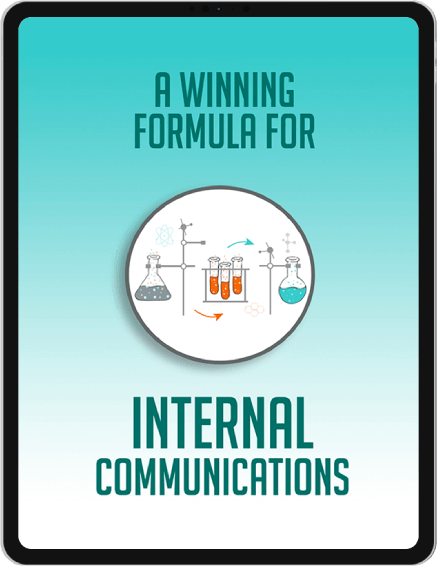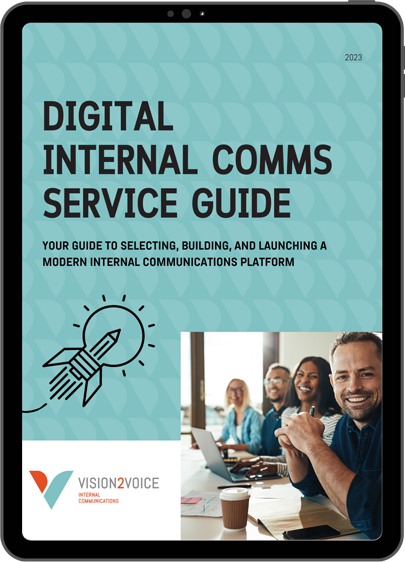Forget the Presentation and Tell a Story Instead
 People have been telling stories for thousands of years. Historians tell us that oral storytelling was critical to helping people learn to avoid danger, find food, and understand rules and expected behaviours in early societies.
People have been telling stories for thousands of years. Historians tell us that oral storytelling was critical to helping people learn to avoid danger, find food, and understand rules and expected behaviours in early societies.
Today, stories permeate our lives — from the bedtime tales we are told as children to the movies, TV shows and books we consume today. But when we walk through the office door, the stories stop. Instead, we are faced with facts presented in bullet form on PowerPoint slides, data in pie charts, and corporate updates sent by email.
Is there a role for storytelling in organizations? I believe the answer to this question is a resounding yes. Not only is there some pretty cool neuroscience to back me up, but I have achieved great results in organizations by uncovering and telling great stories.
The Science of Stories
Research has shown that our brains react very differently when we hear a story. In fact, our brains are wired for them and this is exactly what makes storytelling such a powerful tool. I’ve provided a very quick summary here of how your brain reacts when it hears a story as compared to when you hear random facts or receive sensory information. From this summary, we can start to understand why stories should play a starring role in internal communication.
Dopamine – the feel good neurotransmitter
A story that elicits emotion triggers the release of dopamine the feel good neurotransmitter. Scientists tells us that this process makes a narrative easier to remember than random information. Research has found that stories are also remembered with greater accuracy than facts or data.
Stories are 22 time more memorable than data!
Cortex Activity
When you process facts, only two areas of your brain are involved. But a good story will light up many more parts of your brain including the motor cortex, sensory cortex and frontal cortex. This explains why your mouth starts to water when the story your reading describes the freshly baked apple pie cooling on the windowsill or why tears flow at a particularly sad part of a movie. Scientists believe that these reactions prove that our bodies actually get involved in what’s happening in the story.
Neural Coupling
Stories can activate parts in the brain that allows the listener to turn the story into their own experience and ideas. In fact, our brains process imagined experiences the same way as a real experience. A story can put us in someone else’s shoes, helping us overcome our differences and increasing understanding and empathy. Neural coupling is also our natural way of creating order by connecting disparate bits of information into a cohesive narrative or cognitive map.
Mirroring
If a group of people are listening to a speaker, their brain activity will be similar to one another, and to that of the person telling the story. These shared feelings and emotions help connect us to others by bringing people together through shared experience.
Advantages of storytelling
Storytelling in organizations can build knowledge, help to change behaviour, create a sense of belonging and a shared purpose. Here is a quick list of the many ways storytelling can solve some of your toughest internal communication challenges:
- They are the antidote to information overload because they are easier to remember but they help make sense of data and random facts.
- They help us solve problems and can make us more creative.
- They help change behaviour and support learning.
- They motivate and excite.
- They can build empathy and create a sense of belonging.
- They can illuminate purpose and make it concrete.
I saw first hand the power of a story to change perceptions when data, facts and business cases were only getting us so far. I was working with a client on a Corporate Sustainability and Responsibility project. Our goal was to help certain aspects of the business understand the benefits of operating in a more responsible and sustainable manner. Even though there was overwhelming data and other evidence to demonstrate the change was the right thing to do, we were continued to encounter resistance.
We decided to take another approach. We started to tell stories of how more sustainable and responsible decision-making made a real difference for certain customers. Providing vivid descriptions of how a shift changed the customer experience and created happy endings for specific organizations. These stories were extremely popular becoming legends that were retold again and again across the organization. And it was these stories more than any other thing we did that enabled the shift in attitudes and behaviours.
How to make storytelling part of your culture
Here are some internal communication best practices for using storytelling in your organization to help inform, involve and inspire employees.
1. Be deliberate
Include storytelling as as part of your internal communication strategy with a deliberate focus on using narratives to achieve business results. Decide how you are going to use stories and what types will best do the job. If you want to increase knowledge in a certain area, then focus on telling stories that will boost learning.
2. Build storytelling muscle
It can be difficult to get people to understand the value of telling stories and even harder still to uncover the great tales that will become legends in your organization. What’s worked for me is to start small and then demonstrate the value of storytelling by tracking results. For example, get your CEO to start off his next talk with employees with a story and measure the response. It won’t take long before telling stories will catch on as people see the difference they can make.
3. Make it great
A great story starts by understanding your audience. Then use good storytelling elements by developing an interesting plot, creating interesting characters, and then weaving in drama. Don’t be afraid to talk about the problems that people faced or the obstacles that needed to be overcome. I also encourage you to use detail that will bring the story to life. When I’ve used stories in organizations, I have created longer versions that can be used in speeches or articles and then created shorter ‘water cooler’ versions that can be told in meetings.
4. Get creative
Don’t limit storytelling to print or online. Use videos, podcasts, town halls and live Ted Talk type events. By telling stories using different publishing platforms or channels you increase impact and interest. You also shouldn’t limit yourself to just telling stories with a happy ending. Many valuable lessons can be learned by sharing failures, things that didn’t work out as planned or projects that didn’t achieve results.
Our brains are wired for stories – next time you want to engage employees or give information meaning, tell a story.

A Winning Formula for Internal Communications
Read The Free eBook
Our eBook shares our unique formula for building business culture and driving success. Find out the 3 key factors in attracting, inspiring and retaining high-calibre talent. Get your free copy when you subscribe to our newsletter. Be the first to know about new blog posts and stay up to date with industry news.
Download the ebook
A Winning Formula for Internal Communications
Read The Free eBook
Our eBook shares our unique formula for building business culture and driving success. Find out the 3 key factors in attracting, inspiring and retaining high-calibre talent. Get your free copy when you subscribe to our newsletter. Be the first to know about new blog posts and stay up to date with industry news.
Download the ebook




